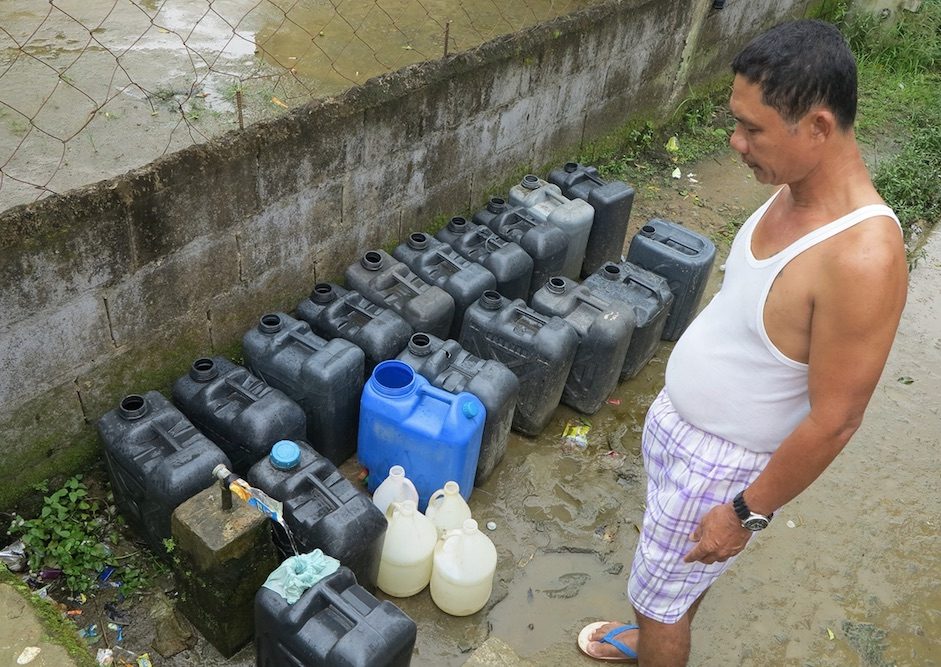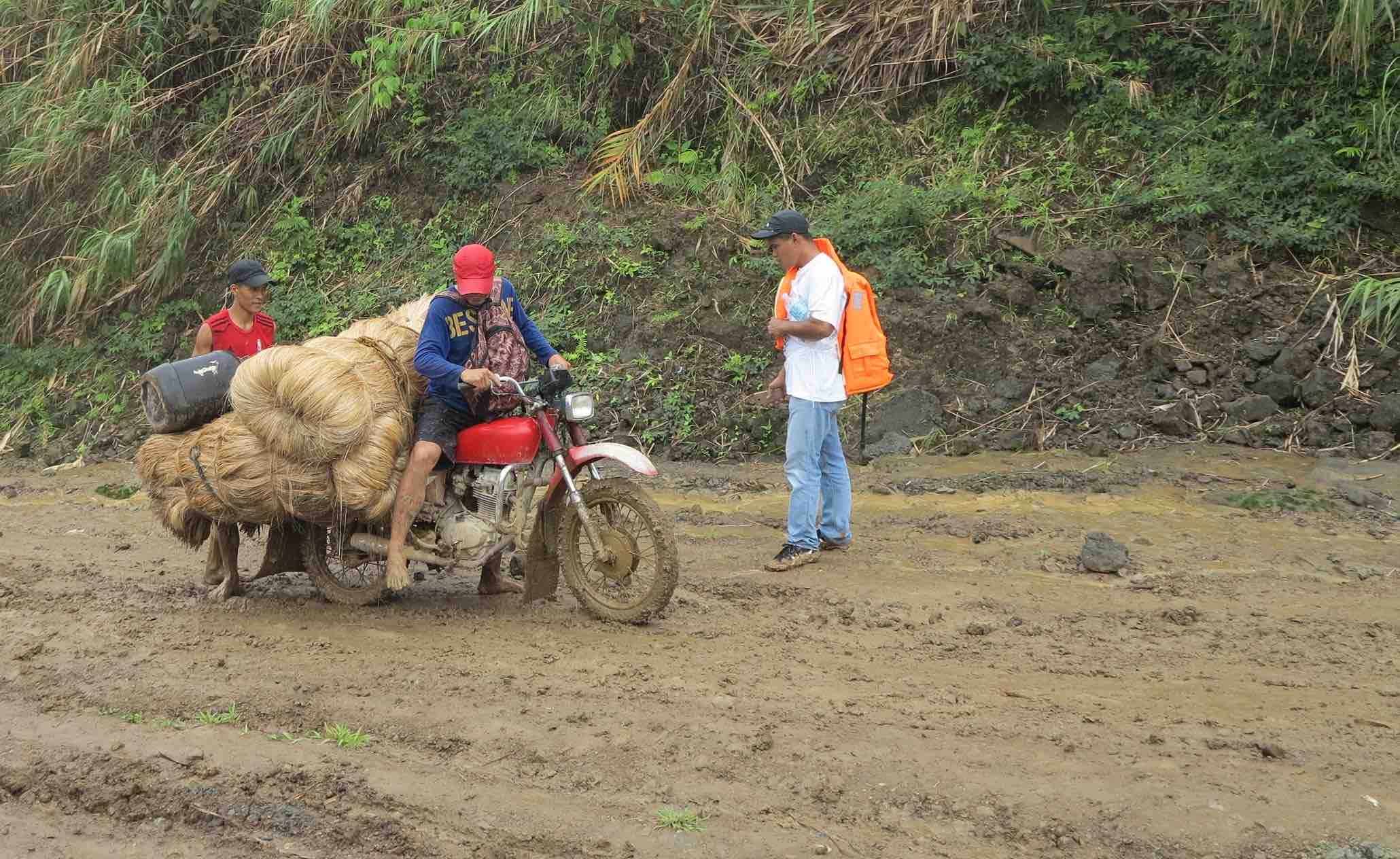SUMMARY
This is AI generated summarization, which may have errors. For context, always refer to the full article.

Of all the days in February, my mission to write about our water project in a remote municipality in Northern Samar fell on a rainy day. So, for the first time in my (urban) life, I struggled to hike for 3 hours on an extremely muddy, uphill road to reach this small town.
Silvino Lobos is a fourth-class interior municipality in Northern Samar, one of the 15 poorest provinces in the Philippines, with a poverty incidence of 43.5%. On that day, our team left the provincial capital of Catarman at 8:30 am and arrived 30 minutes later at the 24-kilometer mark toward Silvino Lobos.
It would have been an easy trip with our 4-wheel drive, but with 8 kms of unpaved track remaining and a steady drizzle, our driver Edwin knew we’d have to strap on our boots and walk. It was an “extreme challenge” for me as I plodded carefully to avoid injury. For the habal-habal drivers who ferried passengers, or the farmers with their harvest of abaca to sell—it is a daily struggle.
We then rode a motorboat that took us to Silvino Lobos in 30 minutes. With us was a couple with their baby, and I thought how difficult it must be if there were a serious medical emergency.
At 12:30 pm, we finally reached the remote town. This community had suffered from decades of underdevelopment, with the insecurity due to the conflict between government forces and the New People’s Army (NPA) as one of the causes. The access to the highway was one major issue that the government had already started to address, based on the road work we saw.

Limited water and no power supply
Silvino Lobos, I was told, is the only municipality in Northern Samar that still has no permanent power supply; some families rely on solar panels and generators. Their water supply was questionable because it passed through old and leaky galvanized iron pipes.
The International Committee of the Red Cross (ICRC), the humanitarian organization I work for, has been working in Samar island for decades due to its internal armed conflict. It was through an assessment after Typhoon Ruby in 2015 that the ICRC initiated a project to replace the water transmission line, and to find an additional water source, to improve the overall quantity and quality of the water in Silvino Lobos.
“The humanitarian consequence of the lingering conflict is not displacement, but the lack of access to basic services, and underdevelopment. Our goal then is to improve the resilience of such communities,” said Woody Assaf, head of the ICRC office in Tacloban.
To encourage community participation, the ICRC hired 24 laborers in Silvino Lobos to implement the project. Unskilled laborers who helped dig holes and transport materials were paid P250 a day, while skilled laborers such as masons and plumbers were given P450.
The small-scale project, which began in September 2016, was completed just two days before our visit. More than 4,500 people in 3 barangays are now enjoying potable water and increased volume.
“Tubig talaga ang problema namin dito (Our real problem here is water),” said 52-year-old farmer Orselino Sierbo, who was filling his jerrycans. He said his family of 10 needed at least 10 jerrycans a day for drinking, washing, and other uses.

Once a conflict flashpoint
In the mid-1980s, Edgar Bartolo, a 41-year-old abaca farmer, recalled that Silvino Lobos was a flashpoint for the conflict between the government forces and the NPA. He said civilians, especially farmers, were often caught between the fighting.
Nowadays, it has been relatively quiet in Silvino Lobos. The Philippine flag waved at the public school as I glimpsed the young students in their classrooms. Meanwhile, a military platoon stood guard in an old tower near the municipal hall.
“Sana maihalintulad sa ibang lugar na may pagkaangat-angat ang buhay (I wish we would be like the other more progressive towns),” Bartolo said.
We left Silvino Lobos after two hours to be back in Catarman by sunset. After the boat ride and some hiking, we hired habal-habal drivers to make the trip faster. Habal-habal drivers charge P300 – P500 for the ride, so you can imagine how much it would cost a poor family to go out of town.
Our journey going back was safe and short, thanks to the hardy habal-habal. But when we finally left, our two 4x4s got stuck in the mud. Our drivers had to use the winch from one of the vehicles to pull itself out and to pull the other car out.
It was during this trip that I also renewed my admiration for our field teams. It made me reflect on the various risks they face when going to these remote conflict-affected areas.
Two hours was not enough time to go around Silvino Lobos and engage with residents, but it was a unique experience that reminded me – a citizen of this country and someone living in “imperial Manila” – how so much more needs to be done to put an end to the armed conflicts in our country, and to improve the quality of life for many Filipinos. – Rappler.com
Allison Lopez is the head of public communication in the International Committee of the Red Cross (ICRC) delegation to the Philippines.
Add a comment
How does this make you feel?
There are no comments yet. Add your comment to start the conversation.